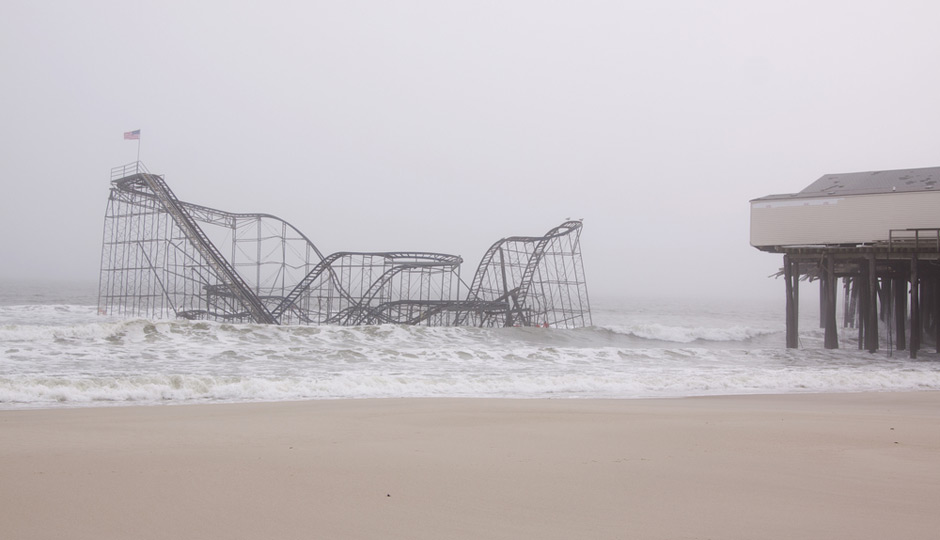Report: Superstorm Sandy Second-Costliest Weather Event Since 1970

According to a new report published by the World Meteorological Organization, the $50 billion in economic damage inflicted by Superstorm Sandy ranks second only to Hurricane Katrina’s nearly $147 billion among the costliest weather events since 1970. Storms in the U.S. took five of the top 10 slots (above), while the events with the most fatalities tended to occur in less-developed countries.
“Disasters caused by weather-, climate- and water-related hazards are on the rise worldwide,” said WMO Secretary-General Michel Jarraud in the report (PDF; see below). “Both industrialized and non-industrialized countries are bearing the burden of repeated floods, droughts, temperature extremes and storms. The escalating impact of disasters is due not only to their increasing frequency and severity but also to the growing vulnerability of human societies, especially those surviving on the margins of development.”
But these rankings are more than just idle list-making. Jarraud explains that there are both practical and big-picture applications for these studies:
“It can support practical measures to reduce potential impacts, such as investing in early warning systems, retrofitting critical infrastructure or enforcing new building codes. Information about past impacts can also be used to assess the resilience of a society.”
According to Prevention Web, the information hub for the disaster risk reduction community: “The report is published ahead of the First Session of the Preparatory Committee (PrepCom) Meeting [yesterday and today] in Geneva, for the Third UN World Conference on Disaster Risk Reduction to take place in March in Japan. You can follow PrepCom on Twitter:
#wcdrr PrepCom talks open in Geneva on a new #hfa major groups all present #drr pic.twitter.com/UeIwCHkfEc
— UNDRR (@UNDRR) July 14, 2014
[h/t Star-Ledger]
Full WMO report below:


